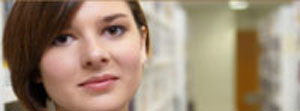Joel Friedlander, DO, MA
Pioneering Work to Reduce Need for Anesthesia in Pediatric Endoscopy
If necessity is the mother of invention, then the health care industry should be a hotbed of innovation. Yet in today’s hospitals, many clinicians are bowed by the weight of policy, regulations and funding. It’s no surprise that creativity doesn’t always get the chance to take hold.
However, with support from the School of Medicine and Children’s Hospital Colorado, Joel Friedlander, DO, MA, and his team have invented a new pediatric endoscopy process that could revolutionize the way physicians diagnose and follow gastrointestinal complaints in children.
“My entire life I’ve been the ‘crazy idea guy,’” he said. “Most of those ideas go in and out of my mind in a flash, so it’s amazing to see something actually being built that helps children and medicine as a whole.”
Dr. Friedlander, or “Dr. J” as his patients call him, is associate professor of pediatrics—gastroenterology, hepatology and nutrition—at Children’s Hospital Colorado. He is part of the Aerodigestive Program, treating children with complex airway, respiratory and gastrointestinal tract disorders.
“Gastrointestinal issues sometimes overlap with other problems,” Dr. Friedlander said. “In order to investigate the cause, we often have to perform a sedated endoscopy with three different providers in the room: ENT, pulmonary and GI.”
Dr. Friedlander’s idea was to try a smaller endoscope through the nose to assess pediatric GI complaints, known as transnasal endoscopy (TNE), instead of the usual sedated endoscopy through the mouth. He attributes his inspiration to working in such an interdisciplinary environment, and says the insight arrived when he experienced what he called ‘scope envy’ in the operating room.
“I noticed the camera the pulmonary doctor used to look at the lungs was similar to the one I used for the GI tract, but with one key difference: it was much smaller. I thought, ‘Why don’t I have a small camera like yours?’ When I realized that adults had a special scope to go through the nose without anesthesia, I put two and two together and knew I wanted to try this for my patients.”
Adult nasal gastroscopes are too large for pediatric use, so Dr. Friedlander is currently using pediatric bronchoscopes to perform unsedated endoscopies for patients with suspected eosinophilic esophagitis (EoE), a chronic inflammation of the esophagus caused by food allergies that requires frequent monitoring. However, since bronchoscopes were not designed for this purpose, he has been awarded a state grant to design and develop a new, more appropriate scope.
With more than 200 TNEs performed in less than three years, Dr. Friedlander has received great patient feedback. The technique itself takes just 5–6 minutes (procedure length 45-60 minutes in total), and patients are distracted from the procedure by virtual-reality goggles. In comparison, endoscopies performed under general anesthesia can take three hours, requiring children and their parents to miss days from school and work.
Yet the benefits of TNE extend far past the patient experience. Previously, children with EoE could undergo only 1–3 endoscopies a year because of the anesthesia risk. Now they could potentially have up to six a year. What’s more, TNE costs barely a third of the price of sedated endoscopy and allows physicians to find personalized treatments quicker and with more accuracy.
At present, Dr. Friedlander is the only provider using this technique, though he has received several visitors from institutions across the country and is in the process of training other providers from the Digestive Health Institute at Children’s Colorado.
Dan Hyman, MD, MMM, chief medical and patient safety officer at Children's Colorado, said that Dr. Friedlander’s approach to practice is integral to the future of the hospital.
“Innovative approaches to improving care outcomes, costs and experience are essential for our health system as we seek to increase the value of our work,” he said. “Dr. Friedlander’s pioneering work to reduce the need for anesthesia in pediatric endoscopy is a great example of a new approach to practice that he has thought of and implemented to the benefit of his patients, families and the hospital. His work is now becoming a model for other pediatric centers.”
Though he is proud of his achievement, Dr. Friedlander remains humble and has plans to extend the project.
“This is still a new technique, so we’re figuring out how best to use it and when. We’re also working on other modifications and prototypes. But this was by no means just me. Having a lot of specialists in one room creates what we like to call a ‘medicine think tank.’ Jeremy Prager, MD, Emily DeBoer, MD, and Robin Deterding, MD, were all key to this project, and Gil Peri, SVP and chief strategy officer at Children’s Hospital Colorado, really started the ball rolling.
“The School of Medicine and Children’s Hospital Colorado have provided more support than I could ever have hoped for. They have allowed me to turn a dream into an invention that is improving children’s lives. This ongoing work would not be possible without our TNE team, particularly Clint Smith, BSN, RN, and Krystal Mesenbrink, RRT, and our endoscopy director Robert Kramer, MD, and Digestive Health Institute chief, Ronald Sokol, MD.”
Ultimately, the success of the aerodigestive team in creating a procedure that reduces costs and increases efficiency is a real testament to the power of interdisciplinary medicine.
“We’re essentially using an ENT technique with pulmonary equipment to complete a GI procedure,” Dr. Friedlander said. “And all of this is to make sure every child has the opportunity to receive the best, most efficient and least expensive care.”
Advisory Councils
University of Colorado Hospital
Children’s Hospital Colorado
Study Volunteers

Are you eligible?
Thousands of people volunteer for clinical trials each year at the School of Medicine. Some offer payment; others give free health exams and follow-up.
View the CU Anschutz Clinical Trials Website for volunteer opportunities.